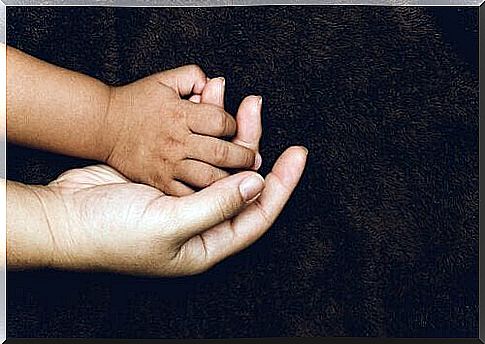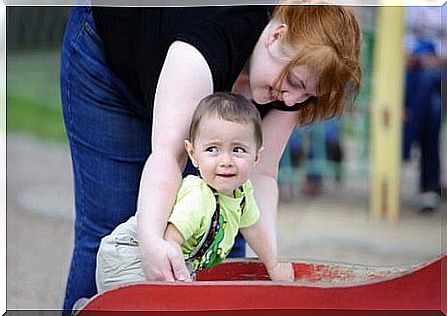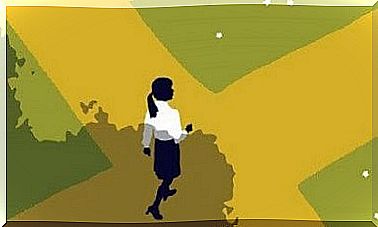The Strange Situation Test To Assess Attachment

Attachment is the bond that exists between two people that is characterized by intense emotions. Normally, it is a long-term relationship with a special and binding component. Mary Ainsworth pioneered the development of the first tool to assess attachment in children. Her test is known as the strange situation test.
This mother-child bond is not exclusive to humans. Many animals also know this band. However, humans take a longer time to form the bond. Attachment is strengthened when there is unconditional love between two people.
The purpose of bonding
It is essential that a child’s first attachment relationship is healthy. The purpose of bonding is therefore to provide the baby with safety, comfort and protection and to meet his or her basic needs.
Depending on the attachment style that children develop with their caregivers, they may exhibit more or less aloofness, emotional refuge, protest against separation, and self-confidence.
This bond not only affects the immediate well-being of the child, but also marks his psycho-evolutionary development. An insecure attachment can affect a child well into adulthood.

Necessary Conditions for Attachment
For the baby to form the first bonding relationship, the baby must meet a number of minimum requirements. These requirements guarantee that the bond will develop properly:
- The baby sends out sufficient signals of attachment behavior. Milestones, such as smiling or babbling and following and approaching the mother.
- This behavior should attract the adult and establish and produce intimate interaction between the two.
- The baby should have minimal affective skills.
- He or she must have a set of minimal cognitive resources to recognize the adult, build memories, and forge expectations regarding his or her attachment figure.
The Strange Situation Test
The Strange Situation Test is a standard observational procedure designed in 1960 by American psychologist Mary Ainsworth. The purpose of the test is to study the interaction that a mother or an adult (the stranger) has with the child in an unfamiliar environment.
The test is so popular in developmental psychology that it is still used today to classify and assess attachment types.
Simulations
The Strange Situation Test tries to simulate certain contexts to analyze how children behave outside their comfort zone. In other words, how children move from the safe environment of their home to another unfamiliar location.
Through observation, the researchers study the reactions of children when they are separated from their mothers and then when they are reunited.
This simulation consists of eight parts that are intended for children around one year old. The relationship between baby and caregiver should be clearly established around this time.

The observation procedure
In one of the most commonly used variations of this procedure, Ainsworth placed the infant next to its mother in a room full of toys. After a while, a strange adult entered the room to play with the child and the mother left the room, leaving the child with the stranger.
Then the mother came back. Later , both the mother and the stranger left the room and left the child alone. Then the stranger came back in and then the mother. With this, the psychologist evaluated the reactions and interactions that took place between the attachment figure, the child, and the stranger.
Suture Types
The strange situation test identified three attachment types: secure attachment, avoidant attachment, and ambivalent attachment.
- Attachment is secure when the child freely explores the environment when separated from its caregiver. The child feels fear when his mother leaves, but is excited when she returns.
- Also avoidant attachment is characterized by the fear that the little one experiences when leaving his mother. However, unlike a secure attachment, the child tends to avoid its mother when she returns.
- Insecure/ambivalent attachment can be recognized by signs of anxiety throughout the process. The child shows anger towards his caregiver, especially when he or she is absent.
A child’s attachment does not fully determine his personality or the quality of his relationships with adults. However, it can influence these factors and the relationships built in later stages of development.







